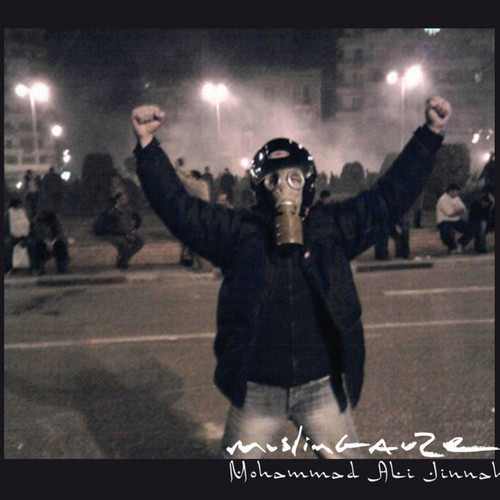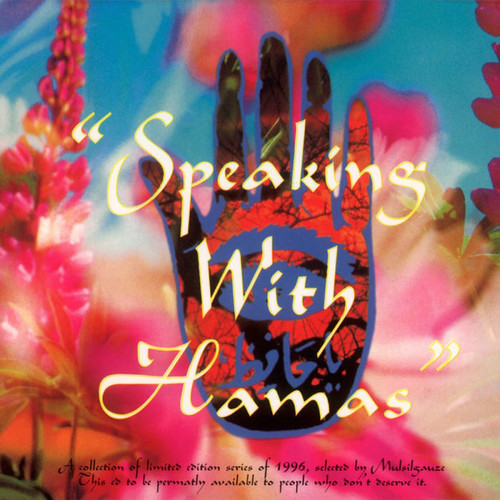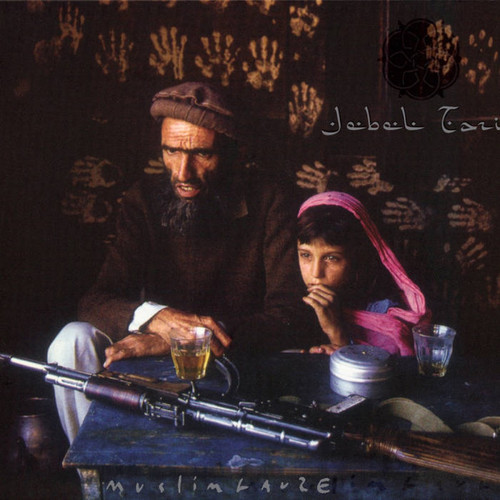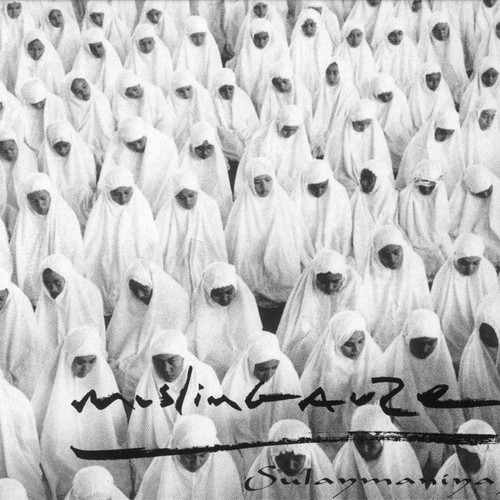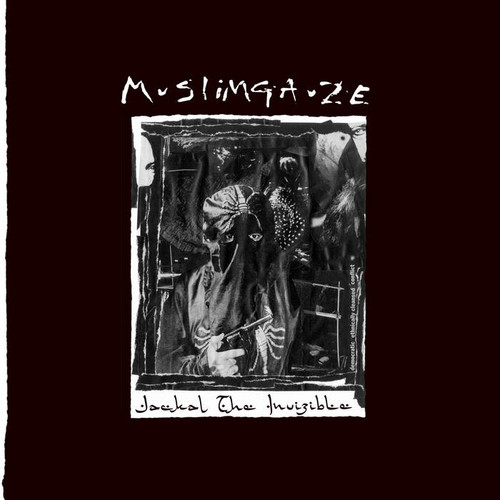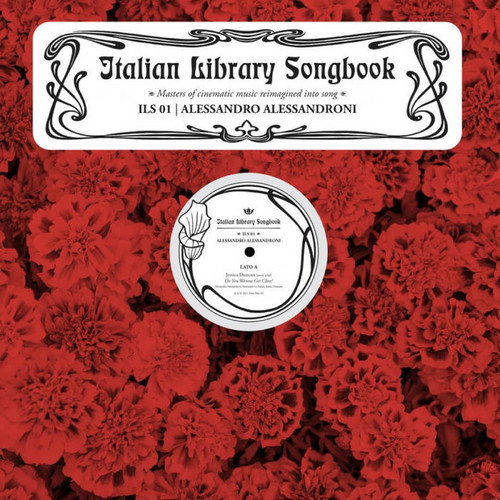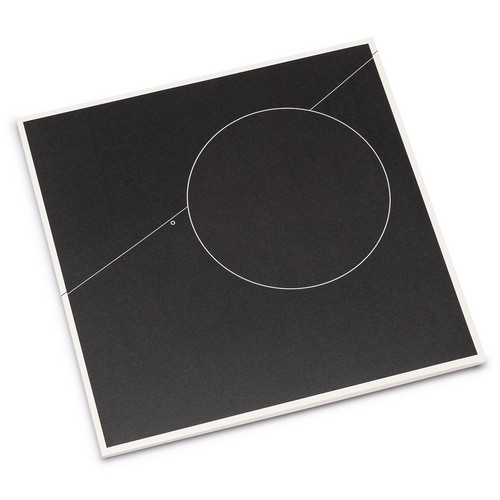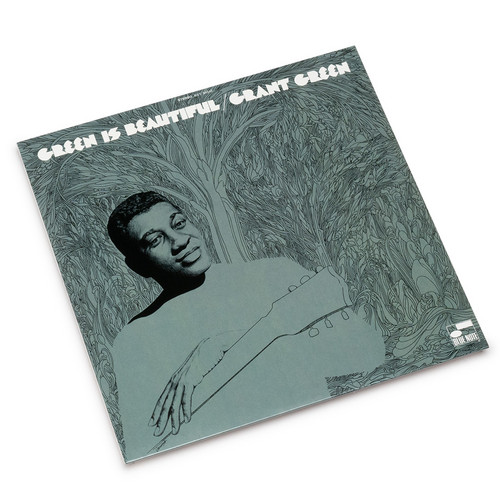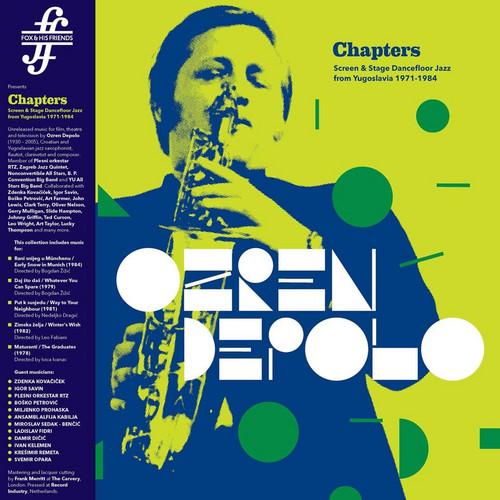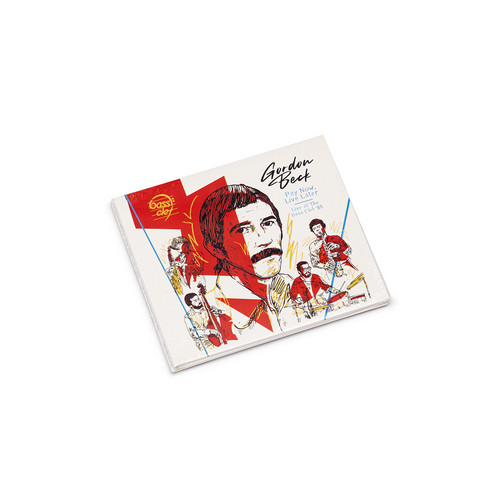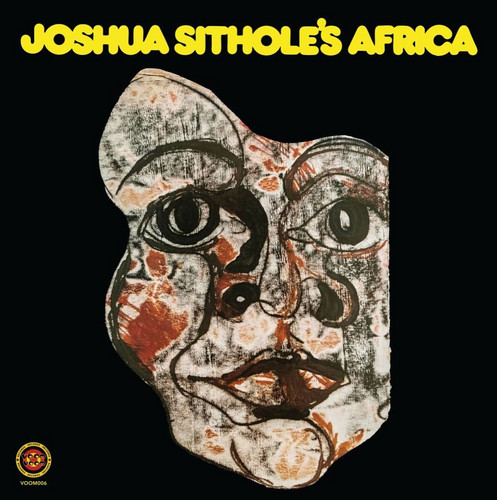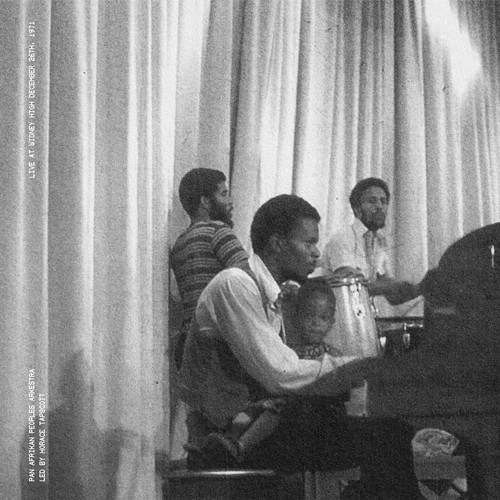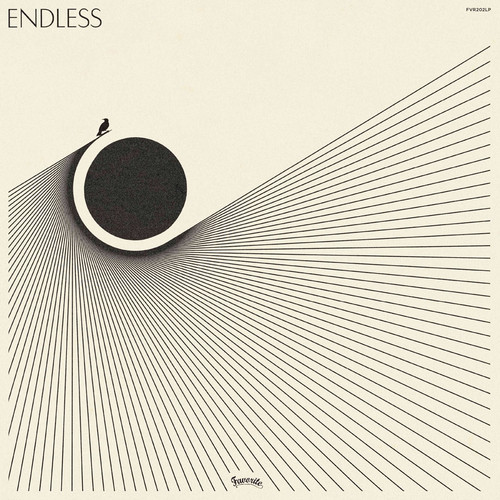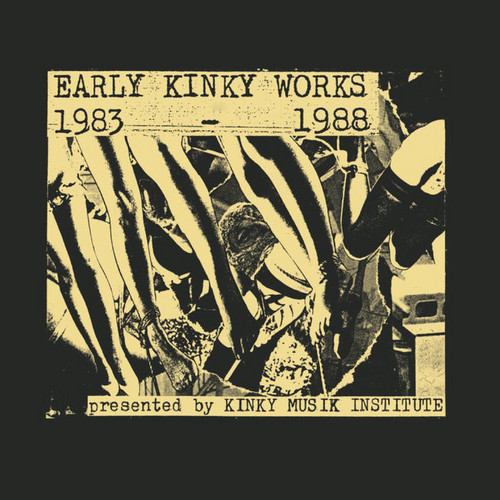Reissues
So Far
CD Digipack. Wümme, Lower Saxony. 1972. A converted schoolhouse. Inside: a tangle of cables, reel-to-reel machines, custom electronics soldered together by hands that refused manuals. This was not a professional recording studio. This was Faust's laboratory—and So Far was the experiment that proved you could rewire rock music's circuitry without killing the patient. Six months earlier, Faust had released their self-titled debut—a savage dismantling of what a rock album could be. Tape edits slice…
Tandoor Dog
*2025 Stock* "In 1998 Staalplaat and Muslimgauze were on a conquering spirit. Bryn Jones (1961-1999), the man behind Muslimgauze delivered new works, almost on a weekly basis and was more than happy to see them released straight away. Unlike others, Staalplaat was never shy to release larger works, lumping various works together, such as the 9CD “Box Of Silk & Dogs”. Allowing free reign in editing, the 4LP box set ‘Tandoori Dog”, contained the LP of the same name, which saw only eight out of the…
Mohammad Ali Jinnah
*2025 Stock* "Unsurprisingly for an artist as prolific and strident as Bryn Jones was, the flood of material he sent to labels and compatriots was not always carefully categorized. Also, sometimes he would be so eager to release material that if things didn’t happen fast enough he’d just send in another tape. And that circumstance is how you wind up with a fascinating oddity like Mohammad Ali Jinnah.Staalplaat has previously released, in 2002, the Muslimgauze album Sarin Israel Nes Ziona. While …
Jerusalaam
*2025 Stock* Jerusalaam plus the two extra tracks make up unused material from the Return of Black September sessions. The contrast, even for someone with as wide a range as Muslimgauze had, is stunning. The original Jerusalaam fits in with much of Bryn Jones’ classic work, with a heavy emphasis on hand percussion, bass-heavy distortion, sharply clipped loops, and the seething his of static. The two otherwise unnamed Return of Black September tracks, however, follow that album in taking a much m…
Speaking With Hamas
*2025 Stock* 'Speaking With Hamas' was compiled by Bryn Jones himself early 1997 and he thought it would be nice to include a new, previously unreleased track. In his words:"It's for people who don't deserve it". "A tourist asked Ali muhamad, a second-hand camel salesman, why camels look so dam supercilious. He replied the Arabs know 99 names for god. But only the camel knows the 100th."
Al Jar Zia Audio
If ‘Satyajit Eye’ (which is released at the same time on Staalplaat) only blinks at Indian culture, the album ‘Al Jar Zia Audio’ does this with both eyes open. It is known that Bryn Jones, the man behind Muslimgauze, looked further than the Palestinian conflict and used extensively the rhythms of India, Pakistan and other Eastern cultures. Like crossing borders in the bigger Islam regio, Jones takes whatever comes at hand and moulds into his own trademark sound – often imitated, never surpassed.…
Jebel Tariq
Jebel Tariq has strong hand drum beats throughout but still maintains a very moody feel. It was undoubtedly these very elements that lead Jeremy Keens to state it was"balanced between the ambient and beat sides" of Bryn's work. It goes beyond just these elements though. There are whispered voices changing to strong ululations, frequent flute"samples" and then the bass. There are parts where the deep throb of the electric bass element gives a very dub feel and then there is the use of acoustic ba…
Sulaymaniyah
*2025 Stock* “Sulaymaniyah is part of Staalplaat’s ongoing Muslimgauze archive series, masters originally submitted in 1997, then “replaced” by what became Vampire of Tehran released early in 1998. It was not uncommon for the prolific Bryn Jones to replace masters with what he believed to be a more fit release. Short of two tracks, “Fez Tishan” and “Hamas Pulse of Revenge”, this is Vampire of Tehran with nine additional, unreleased tracks. Because Sulaymaniyah was “replaced”, it was stored in St…
Jackal The Invizible
*2025 Stock* Listeners who know much of anything about Bryn Jones' work as Muslimgauze know that he was prolific in both his work and in the way he sent out his work to labels and other interested parties. Fittingly enough for an artist that feverishly productive and often taciturn to the point of frustration, he didn't tend to give much more information than handwritten track titles on the sleeve of a DAT. Why he would submit multiple copies of the same or similar tracks to those he worked with…
Muhammadunize
*2025 Stock* Recorded and mixed at Abraham Mosque, Manchester 1996, this is a re-release of Muslimlim 009, only C2 taken from stdc 001. Listeners who know much of anything about Bryn Jones’ work as Muslimgauze know that he was prolific in both his work and Muhammadunize, has what could be called a classic feel to it, with a very familiar blend of drones, string instruments, and synths, and varying percussion/break-beat patterns, in turn mixed with a number of hard-to-catch vocal samples. It's a…
Italian Library Songbook Vol. 1 | Alessandro Alessandroni
Italian Library Songbook Vol. 1 | Alessandro Alessandroni by Jessica Duncan, pAd, and Alessandro Alessandroni inaugurates Four Flies Records’ new series reimagining Italian library and soundtrack music as modern pop. Revisiting Alessandroni’s soulful archives, the EP bridges vintage jazz-funk and contemporary Balearic groove with refined sensuality and cinematic warmth.
Aste
Essential Re-issue of this stone cold classic .First released in 2006 Written and produced by Mika Vainio in Turku 1992-1993.
Mastered at Dubplates & Mastering by Rashad Becker.
Green Is Beautiful
Green Is Beautiful by Grant Green is a lively jazz-funk album recorded in 1970 at Van Gelder Studio and released on the Blue Note label. Marking a shift from his hard bop and soul jazz roots, Green embraces energetic funk grooves, supported by a stellar lineup including Blue Mitchell, Claude Bartee, Jimmy Lewis, Idris Muhammad, and organists Neal Creque and Emmanuel Riggins. The album’s five tracks, including covers of James Brown and The Beatles, showcase Green’s distinctive, melodic approach a…
Chapters (Screen & Stage Dancefloor Jazz from Yugoslavia 1971-1984)
A new release from Fox & His Friends Records, Chapters (Screen & Stage Dancefloor Jazz from Yugoslavia 1971-1984) by Ozren Depolo brings to light a trove of previously unreleased music spanning more than a decade of his work in film, theater and television. This gatefold audiophile 180g LP, including a 12-page booklet with archival photos and detailed liner notes, offers for the first time a full album composed exclusively of Depolo's own authorship, drawn from master tapes held in private and i…
Pay Now, Live Later
Limited edition CD & download retrospective of the pianist Gordon Beck’s musical journey from the 1960s to 1985 from a trio and quintet of Beck, Dave Green and Spike Wells plus Ray Warleigh and Iain Ballamy. The single CD comes in a 6-panel digisleeve, with a 20 page booklet written by Simon Spillett, incorporating memories provided by Iain Ballamy, Dave Green, Liam Noble. The cover art for both sleeve and booklet are original drawings from the brilliant Alban Low.
Joshua Sithole's Africa
The album delivers masterful arrangements, inventive rhythms, rich harmonies, and a perfect balance of flute and saxophone interplay. Funk, Jazz, Gospel, Afro, and traditional elements all merge seamlessly into something unique and timeless.Joshua Sithole (1947–1999) was a self-taught multi-instrumentalist and vocalist from South Africa who first started busking with the Kwela kids in 1959 and then went solo in 1978. He became popular in the 80’s, performing widely in Durban and Cape Town.
Origi…
The Language Shadow
Reissue of the very limited debut LP by this Massachusetts-based musician. We first ran into Kass's Good Cry label when she put out Jordan Perry's eponymous debut, which we promptly reissued (FTR 376LP). And we are well pleased to be able to do the same for The Language Shadow -- a most excellent album by all known metrics. Kass (who works with Meg Remy's U.S. Girls) sings and plays guitar, dulcimer and small instrument-style percussion. Recorded at Montreal's Hotel2Tango, her music has the clea…
Live at Widney High December 26th, 1971
On a Sunday in the early 70s in South LA, you could easily find yourself standing in a high school auditorium, watching Horace Tapscott conduct the Pan Afrikan Peoples Arkestra as they poured out music like a benediction. No tickets, no VIP list—just the community, gathered. This was music as civic duty, as spiritual practice, as revolution by other means. Live at Widney High December 26th, 1971 captures one such afternoon, previously unreleased and now arriving like a dispatch from a parallel u…
Endless – Universal Cosmic Sounds: A Journey Through Cosmic Soundscapes
Favorite Recordings is proud to announce the release of Endless – Universal Cosmic Sounds, a visionary compilation celebrating a decade of musical archaeology and a special milestone: the thirteenth release curated by Charles Maurice since his debut in 2015. Endless is an immersive journey through cosmic soundscapes, where jazz-funk, pioneering electronics, and ambient experimentation merge into a unique listening experience. The collection features 10 rare recordings, meticulously selected from…
Early Kinky Works 1983-1988
The ultimate statement from Japanese noise legend Kimihide Kusafuka. A "fake compilation" of tracks recorded under various aliases, originally issued by his Kinky Musik Institute label in 1993. Noise, power-electronics, techno, post-punk, psychedelia... Kusafuka does it all on this compilation. A work of unbounded creativity and a key document of the Japanese cassette underground.
"This is a fake compilation. All pieces in this product were composed and recorded during 1983 to 1988, under the na…


